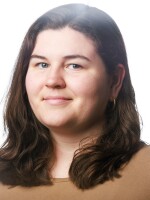Inside Henrico County's Lewis Ginter Botanical Garden is a library for patrons — but not one filled with books. (Well, at least not just one filled with books.) Instead, it’s a seed library filled with endless gardening possibilities. With admission to Lewis Ginter, patrons can “check out” all types of fruit, vegetable and flower seeds for their personal gardening needs.
Kim Strother, host of All Things Considered at VPM News, recently spoke with Kristin Thoroman, vice president of learning and engagement at Lewis Ginter Botanical Garden, about how it all works just in time for Earth Day.
The following has been edited for length and clarity.
Kim Strother: Tell me a little bit about what exactly a seed library is — and what’s at Lewis Ginter’s, especially.
Kristin Thoroman: Our seed library lives within the library at Lewis Ginter. It’s open Tuesday–Saturday from 10 a.m. to 4 p.m. It's a circulating collection of seeds: Anyone who comes to the garden can have access to the seed library.
Through general admission, you come up and enter the garden, you head to our library, peruse the card catalog, search that catalog, find the seed that really inspires them and check it out. We're hoping that you're going to go home, plant those seeds, grow that plant, leave it all the way until it starts to create its own seeds, harvest them — and then ideally, people would bring those seeds back to the library and return them as a way of perpetuating that resource.
What outreach connections do you have with the community?
The seed library is wonderful, because we can take it on the road. We have been at farmers markets, public library programs, schools. It's a wonderful way to engage with people in their neighborhoods, where they are, where they visit every day and give people the opportunity to really kind of spark some excitement for growing plants in their garden.
Is it required that you bring seeds back? Is there a penalty if you don't bring anything back?
We hope that people will bring seeds back. But it is absolutely not a requirement. We really are just trying to inspire people to get out, get their hands dirty.
And then ideally, they're bringing them back. But absolutely, it is not a requirement.

It is Earth Day, and climate change is something we think and hear about. What have you seen? What are your thoughts on how that's changing, and the worries of climate change with planting?
We are planning for climate change at the garden. It is something that — as we are deciding what to plant and what plants will be able to survive in this changing climate. One thing in particular is that as it's getting warmer, that's where we're starting to see the zones change a little bit.
We're starting to be able to grow things that typically would grow in a warmer, almost like a more tropical climate. That change happens gradually, but it's very real. So it could affect things like our frost date and when you can plant things like vegetables for the coming season without having to worry about them freezing. There are long-term effects, but there are also seasonal effects as well.
What would be the biggest message you would want to send to people that don't see that as important in today's society?
Gardening is so important, and I think the seed saving aspect of what we do with the seed library is that next step, like gardening in itself. It creates habitat for pollinators where you can grow your own food, we can perpetuate native plants and make sure that we are gardening sustainably.
I think one of the most important things is that it helps with preserving genetic biodiversity. And so one way that we really see value in maintaining that biodiversity is by empowering people to save their own seeds and really pass them down from generation to generation.
Kristin Thoroman, thank you so much for talking with me today.
Thank you so much.




